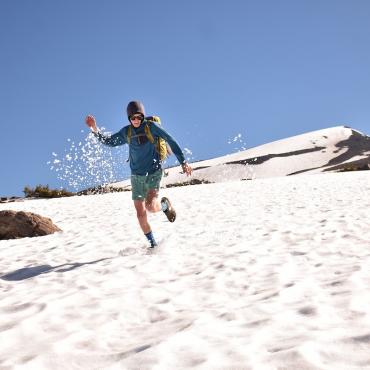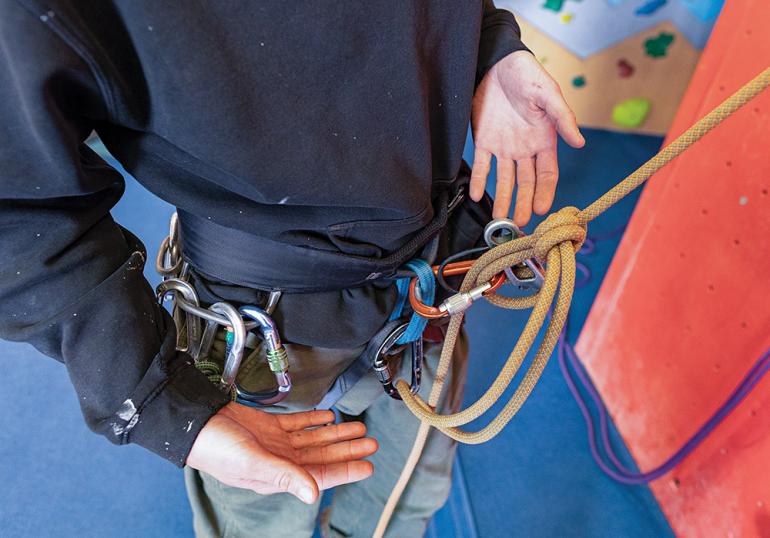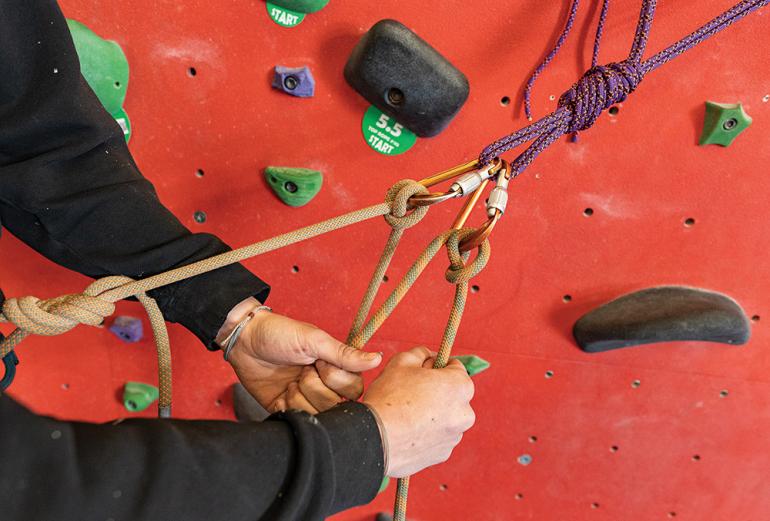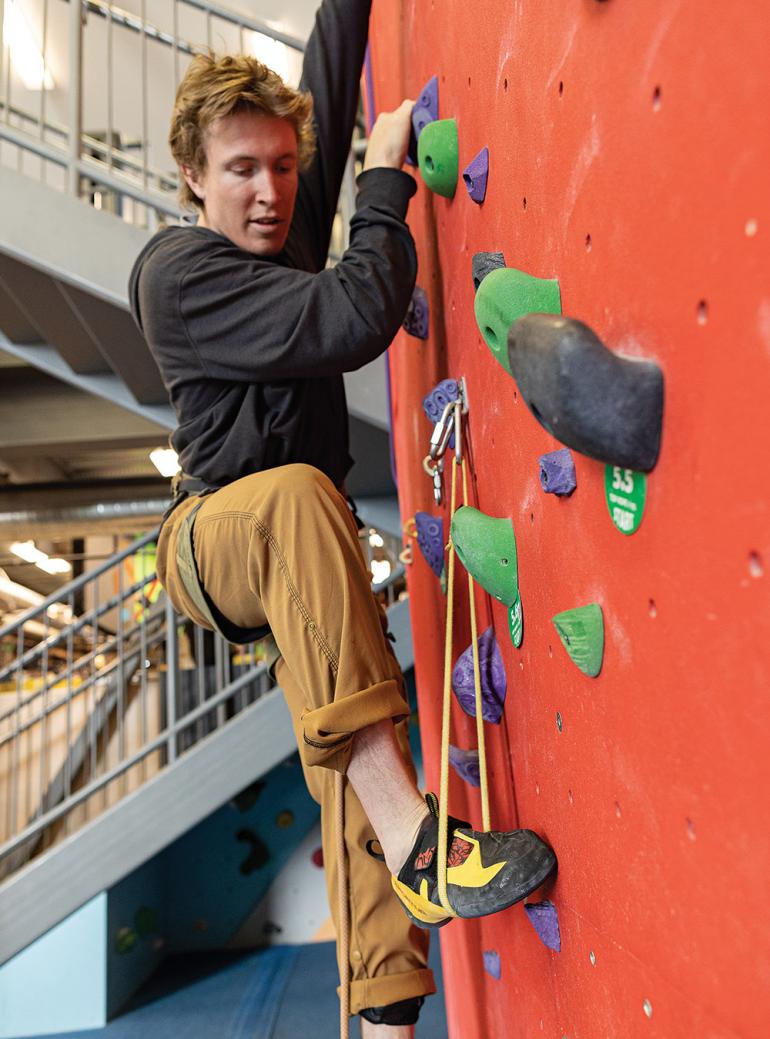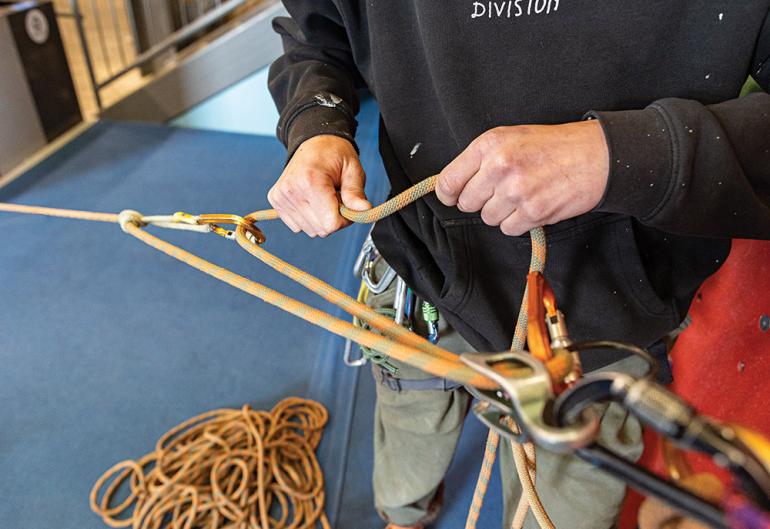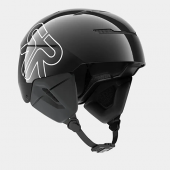In a Pinch
Climbing self-rescue tips.
Rock climbing is wonderful—most of the time. It’s a good way to meet friends, a great excuse for travel, and above all else, a way to enjoy tranquility in the outdoors away from our busy lives. All that said, this joyous activity can also get you into dangerous—and sometimes fatal—situations. Here we break down some common scenarios and talk about how to get out of them safely. Of course, no problem in climbing is exactly the same as another, but these tips and tricks for self-rescue can help in a multitude of settings.
Tying Off a Belay Device
It’s a beautiful day and you’re belaying your partner on a fun sport route, when, boom! A rock falls and hits your partner, leaving him injured and unable to go up or down. You quickly realize that you need to call for help, but how will you get your hands free while still on belay? Here is where the mule hitch comes into play. For this scenario we’ll use an ATC, but any belay device should work. Take the brake strand and form a small, foot-long loop of rope. Tuck the loop through the locking carabiner that connects your ATC to the belay loop. With the loop through the carabiner, tie an overhand hitch around the tensioned strand that is going up to your climber, then clip the loop to your belay loop. Voila! You’ve secured your partner and now have your hands free to rummage through your pack.
Dropped Belay Device at the Top of a Multipitch
You get to the top of a pitch, build a solid anchor, pull up slack, and start to put your partner on belay—oh no! You drop your belay device into the abyss. What now? Stand dumbfounded and wait for a helicopter to wave down? Of course not, you are a climber and know how to be self-sufficient in the mountains. The Munter hitch—invented in the 1950s by Italian climbers—is the perfect tool for the job. Similar to a clove hitch, this technique utilizes two loops to create friction in the rope and will allow you to belay your partner safely up the pitch, as you would with any other belay device. Unlike plaquette-style belay devices (such as the ATC Guide or Reverso), the Munter hitch is not self-braking and must be tended to with a brake-hand at all times. To tie it, create two loops on the strand attached to the climber. Fold the loops to create a one-stranded girth hitch. Slide the loops onto a locking carabiner and attach this to your master point. Belay as you would normally, making sure to always have a hand on the brake strand. Although this method works well, excessive use will twist your rope and make it more prone to tangling, so only use when necessary.
French Free
On multipitch climbs, bailing can be difficult. But what happens if you get to a section that you can’t figure out? Employ the tactics of “French Free.” On the spectrum from free soloing to full-on aid climbing, this style lands right in the middle. Pairing free-climbing gear with basic aid-climbing techniques, stumped climbers can get up pitches way above their pay grades. When hanging from a piece of gear with a tough section above you, clip a sling to the piece on a separate carabiner and place your foot into it, then stand as high as possible. If the route is overhanging or it is difficult to balance, clip a carabiner or quickdraw from your belay loop to the piece, and stand up with some added balance—an impromptu Fifi hook, if you will. Once standing high, you can place protection and pull yourself upward, or perhaps try to free climb now that you are above your last piece.
Hauling a Partner
On multi-pitch climbs, the safest way out is often from the top, by walking off the back. So, what if your partner is unable to continue following up a pitch? Whether it’s fatigue, a difficult crux move, or an injury, it’s time to deploy a three-to-one pulley system and pull your partner upward. First off, you need to belay directly from an anchor, not your harness. Now, with a sling or length of cord, wrap a Prusik hitch around the tensioned strand going down to your climber. Clip a locking carabiner to the Prusik and clip the brake strand through this carabiner. Then, with all your might, pull upwards on the brake strand until the Prusik comes close to your belay device, then slide the Prusik back down the tensioned strand as far as you can reach to reset it. Repeat the process. If your partner is able, give a count of three for the both of you to make an effort toward upward progress. The same technique can be used to haul a heavy bag.
Editor’s note: these techniques should be practiced in a safe environment before attempting them in the field.

